#dermacentor
Explore tagged Tumblr posts
Photo
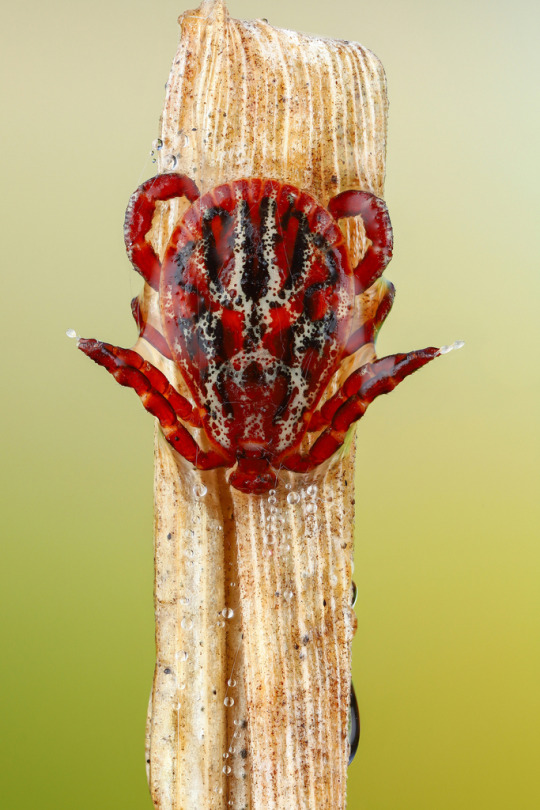
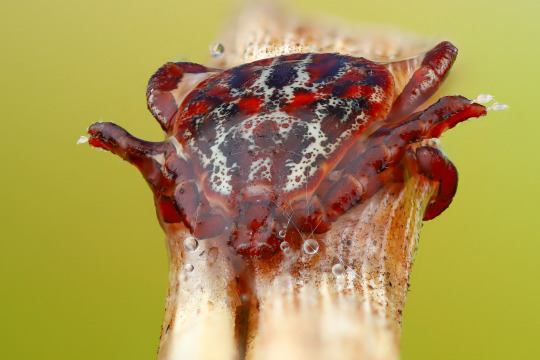
Ornate cow tick, Dermacentor reticulatus, Ixodidae
Photographed in Belarus by shapomacro
(I’m not sure what’s going on in this photo since the photographer did not specify. Looks like there’s silk around the tick? And maybe also water? Hard to say.)
#animals#curators on tumblr#bugs#arachnids#parasite#tick#dog tick#Dermacentor#ornate cow tick#ornate dog tick#one nice bug
738 notes
·
View notes
Text

i have never reacted to anything with as much enthusiasm as the way ticks do when you approach a plant they're questing on. here's an example with this ornate sheep tick (Dermacentor marginatus) who immediately went into hug stance mode thinking i was going to walk another few centimeters forward with an oblivious look on my face. get your own blood, idiot
(October 13th, 2024)
#my pics#bugs#entomology#arachnids#ticks#acari#ixodidae#dermacentor#bugblr#scratched record voice: if you're annoying about parasites in the notes i will wrap your teeth in cling film
88 notes
·
View notes
Text
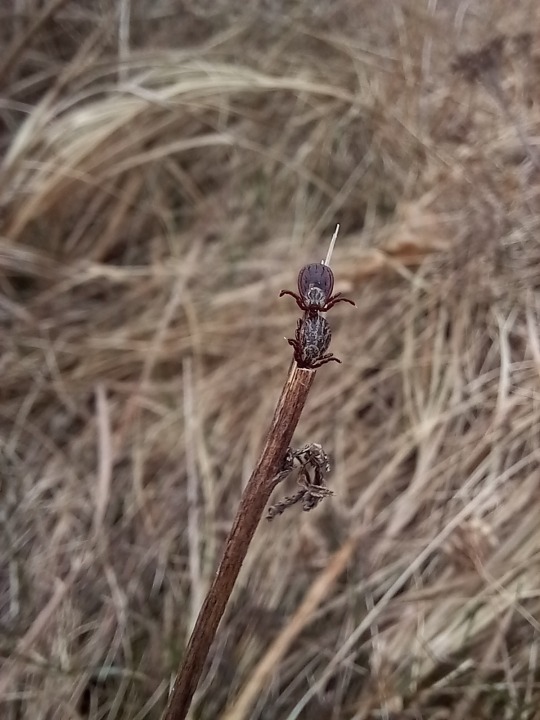
Ornate Cow Tick (Dermacentor reticulatus)
Observed by piotrzaniewski, CC BY-NC
3 notes
·
View notes
Text
Newest banger argument as to why a client thinks their cat's poor dental health isn't that much of an issue: "Well, I mean--in nature, no one's pulling their teeth either." Sir. There are no British Shorthair 'in nature'.
#nor any other domestic cat but y'know#his reply was 'well he's out in the garden sometimes' btw#i need to schedule a puppy every day just to balance out all the stupidity#and then hope the owners aren't fervently anti-'chemistry'#ma'am respectfully that's dermacentor reticulatus your dog brought in here#ever heard of babesiosis?#we sure have. sometimes three times a week.#well. two more days to go this week and then i can hide in a hole some more#personal
1 note
·
View note
Note
Trick or treat ? 🥺🫴
You get a very nice American dog tick (Dermacentor variabilis)!
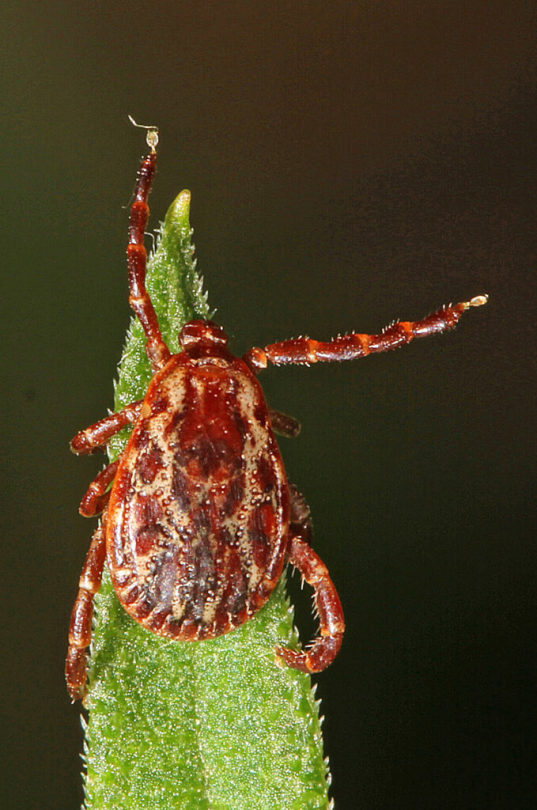
32 notes
·
View notes
Text
BABESIOSIS
Hola!! En esta ocasion hablaremos sobre la enfermedad conocida como BABESIOSIS
Nuestro objetivo con este blog es informar e investigar sobre esta enfermedad, vamos a hablar de que especies son las que actuan como huespedes y como reservorios juntos al tiempo desde que entra el parasito hasta que se elimina todo elemento que lo pueda diseminar, tambien conocer como es posible identificarla e incluso saber los tratamientos para esta.

Pero, que es la babesiosis? esta enfermedad es causada por un parasito, asi como la malaria, que es provocada por protozoos de un genero en especifico "Babesia" y que normalmente afecta a animales domesticos, como a los perros. Estos protozoos son intraeritrocitarios, lo que quiere decir que se alojan en los eritrocitos, que como sabemos son las celulas de la sangre llamadas globulos rojos. Y a su vez estos parasitos son transmitidos por garrapatas.
Primero vamos a identificar a las especies del genero de esta enfermedad, que afecta tanto a animales domesticos como silvestres, y en ocasiones al infectar a humanos es llamada zoonosis, cabe recalcar que hay especies de estos protozoos que estan evolucionados para infectar a cierto tipo de animales en especifico.
Las especies que afectan al ganado son: Babesia divergens, Babesia bigemina, Babesia bovis y Babesia mayor.
En los caballos : Babesia equi (theileria equi).
En los perros: Babesia canis
En los gatos: Babesia felis
En los ratones: Babesia microti
Pero te estaras preguntando, entonces cual es la especie que afecta a los hmanos, pues la Babesia microti, aquella que afecta a los ratones suele ser la fuente principal de zoonosis, aunque tambien ah habido casos con Babesia divergens y Babesia bovis. Los protozoos son piroplasmaticos, por su forma, que es parecida a peras dentro de los heritrocitos parasitados.
Esta enfermedad tiene a su huesped portador, que es la garrapata y esta a su vez lo inocula al reservorio al alimentarse de sangre, normalmente la garrapata que lo transmite es el genero Ixodes spp.Estas cuentan con 3 fases al desarrollarse, larva,ninfa y adulto. al ser larva y ninfa su consumo de sangre es unicamente en roedores, mientras que al pasar a su fase adulta prefieren consumir de otros animales mas grandes.
Al alimentarse la garrapata succiona sangre infectada con el protozoo en los heritrocitos, estos a su vez se mulriplicann en la pared intestinal de lagarrapata y se alojan posteriormente en las glandulas salivares, donde es ahi que al volverse a alimentar lo inoculan al siguiente animal.
Siendo de gran importancia pecuaria, el protozoo Babesia afecta al ganado bovino, utilizando como vector a las garrapatas. Entre las especies de garrapatas que pueden transmitir la Babesiosis están: la garrapata de patas negras (Ixodes scapularis), la garrapata americana del perro (Dermacentor variabilis), la garrapata de patas negras del oeste (Ixodes pacificus) y la garrapata asiática de cuernos largos (Haemaphysalis longicornis).
Los reservorios son roedores, en específico el ratón de patas blancas (Peromyscus leucopus), siendo estos quienes portan el protozoo Babesia microti, siendo este género aquel que ha afectado más a la población humana y al área pecuaria
El ciclo biológico inicia con la garrapata, a la hora de alimentarse de sangre de un reservorio mamífero (roedor infectado). Ingiere gametocitos femeninos y masculinos presentes en la sangre periférica de dicho reservorio. En el intestino del vector biológico (garrapata), se produce la fecundación de los gametocitos, dando lugar a un cigoto móvil, el ooquinete, abandona el intestino y se dispersa por distintos tejidos, transformándose en esporoquistes (tipo de reproducción sexuada), En el ovario y en las glándulas salivales de la garrapata hay esporoquistes con esporozoítos. La parasitosis del ovario origina el tipo de transmisión transovárica de la infección de las garrapatas; las nuevas generaciones no necesitan ingerir gametocitos para mantenerse infectadas. Los esporozpítos en las glándulas salivales son los que diseminan la enfermedad en los mamíferos.
La presencia de síntomas en un mamífero que ha sido picado por una garrapata vector son evidentes después de una a varias semanas después de la mordedura. La parasitemia es notable después de dos a cuatro semanas.
Las manifestaciones clínicas se establecen de modo gradual en un cuadro seudogripal que se caracteriza por fiebre, malestar general, fatiga, anorexia y mialgia. Otras manifestaciones son náusea, vómito, dolor abdominal, atralgia, faringitis, depresión, labilidad emocional, anemia, trombocipotemia, transaminasas elevadas y esplenomegalia. Las complicaciones más graves incluyen insuficiencia respiratoria, anemia hemolítica, coagulación intravascular diseminada, insuficiencia cardíaca congestiva y lesión renal aguda.
TRATAMIENTO
En infecciones graves, con más de 10% de eritrocitos parasitados por B. divergens, es necesario realizar transfusiones, más clindamicina, 300600 mg
EV o por vía oral c/6 horas, es decir, 20 mg/kg/día por 710 días. En casos menos severos es suficiente la clindamicina sola por vía oral. En infecciones
por B. microti, es preferible la combinación de clindamicina, 300 mg c/6 horas (1 200 mg/día), más quinina, 500 mg c/8 horas (650 mg/día) por vía oral
por siete días. Se han descrito babesiosis graves que han requerido exsanguinotransfusión y/o reemplazo total de los eritrocitos, con buenos
resultados.2
Azitromicina, 500 mg el primer día, seguida de 250 mg por 7 días más atovaquona, 750 mg diarios por 710 días por vía oral también ha dado buenos
resultados. Se ha observado resistencia de B. microti a la combinación de azitromicina más atovaquona en pacientes inmunosuprimidos

Bibliografía
Apt W (2013). Babesiosis. Apt Baruch W(Ed.), Parasitología humana. McGraw-Hill Education. https://accessmedicina.bibliotecabuap.elogim.com/content.aspx?bookid=1445§ionid=96520677
Guía de las distintas especies de garrapatas y las enfermedades que transmiten. (s. f.). Mayo Clinic. https://www.mayoclinic.org/es/diseases-conditions/alpha-gal-syndrome/in-depth/tick-species/art-20546861
Rosenthal P.J. (2024). Babesiosis. Papadakis M.A., & McPhee S.J., & Rabow M.W., & McQuaid K.R.(Eds.), Diagnóstico clínico y tratamiento 2024. McGraw Hill. https://accessmedicina.bibliotecabuap.elogim.com/content.aspx?bookid=3463§ionid=286886360
User, S. (s. f.). Babesiosis (Babesia bigemina, B. bovis, B.caballi, B.canis canis, B.canis vogeli, B.canis rossi, B.equi, B.felis, B.gibsoni, B. major, B.motasi, B.ovis, B.perroncitoi, B.trautmanni) - IVAMI. https://www.ivami.com/es/microbiologia-veterinaria-molecular/457-babesiosis-babesia-bigemina-bovis-caballi-canis-canis-canis-vogeli-canis-rossi-equi-felis-gibsoni-major-motasi-ovis-perroncitoi-trautmanni#:~:text=Las%20principales%20especies%20que%20afectan,en%20los%20ratones%20Babesia%20microti.
0 notes
Text
Pet Care: Protect your beloved pet from ticks and fleas
Ticks and fleas pose health risks to pets and humans, including skin irritation, diseases, anaemia, and tick paralysis.
Tick and flea infestations are not just a nuisance for pets; they pose a challenge to humans as well. The diseases caused by these pathogens are easily transmissible from animals to humans, leading to a larger health concern. The warm, silky fur of cats and dogs is the ideal home for fleas and ticks. These insects feed on the blood of your pet and can lead to a variety of health issues, including allergic reactions and deadly diseases spread by ticks.
Prevention tips and tricks:
Skin Irritation and Allergies: Ticks and fleas can lead to rashes and allergic reactions in pets.
Transmission of Diseases: Ticks and fleas are vectors for various diseases.
Anaemia: Fleas feed on blood, and a severe infestation can cause heavy blood loss leading to anaemia, especially in young or small pets.
Tick Paralysis: The Dermacentor tick is one particular species of tick that produces paralysis-causing toxins in animals.
Managing Tick and Flea Infestations: Regular Grooming Use Preventive Products-consult your veterinarian Perform Tick Checks Flea Control in the Environment

#PetCare #PetHealth #PetTicks #PetFleas #PetSkin
#the magnus protocol#dimension 20#taylor swift#dungeon meshi#the sunshine court#critical role#watcher#yuri on ice#transformers one#hades 2
1 note
·
View note
Text
Tableau d’identification des tiques et vecteurs de maladies
See on Scoop.it - Insect Archive
Tick Identification Chart & Disease Vectors Understanding the species of ticks and the diseases they transmit is crucial for effective prevention and…
Muhammad Waqas on LinkedIn, 19.02.2024
#ticks #vectorbornediseases #prevention #healthcare #linkedinpost
�� -------
NDÉ
Traduction via LinkedIn
Comprendre les espèces de tiques et les maladies qu’elles transmettent est crucial pour une prévention et un traitement efficaces. Voici un tableau de référence rapide : 🚨Ixodes scapularis (tique à pattes noires ou tique du chevreuil) : Vecteur de la maladie de Lyme, de l’anaplasmose, de la babésiose, du virus de Powassan. 🚨Amblyomma americanum (Lone Star Tick) : Vecteur de l’ehrlichiose, de l’éruption cutanée associée aux tiques du Sud (STARI), de la tularémie. 🚨Rhipicephalus sanguineus (tique brune du chien) : Vecteur de l’ehrlichiose canine, fièvre pourprée des montagnes Rocheuses. 🚨Dixodes pacificus (tique à pattes noires de l’Ouest) : Vecteur de la maladie de Lyme, de l’anaplasmose, de la babésiose. 🚨Dermacentor variabilis (tique américaine du chien) : Vecteur de la fièvre pourprée des montagnes Rocheuses, de la tularémie. 🚨Haemaphysalis longicornis (tique asiatique à longues cornes) : Vecteur du virus de la fièvre sévère avec syndrome de thrombocytopénie (SFTS). 🚨Ixodes ricinus (tique européenne du ricin) : Vecteur de la maladie de Lyme, virus de l’encéphalite à tiques. 🚨Ixodes holocyclus (tique paralysante) : Peut provoquer une paralysie des tiques due à des neurotoxines. 🚨Rhipicephalus (Boophilus) microplus (tique du bétail) : Vecteur de la babésiose, de l’anaplasmose. 🚨Argas persicus (Tique aviaire) : Vecteur de divers agents pathogènes affectant la volaille.
Restez informé et protégez-vous, votre famille et vos animaux de compagnie contre les maladies transmises par les tiques !
0 notes
Text
Pathogens, Vol. 12, Pages 1365: Efficacy of the Vaccine Candidate Based on the P0 Peptide against Dermacentor nitens and Ixodes ricinus Ticks
The control of ticks through vaccination offers a sustainable alternative to the use of chemicals that cause contamination and the selection of resistant tick strains. However, only a limited number of anti-tick vaccines have reached commercial realization. In this sense, an antigen effective against different tick species is a desirable target for developing such vaccines. A peptide derived from the tick P0 protein (pP0) conjugated to a carrier protein has been demonstrated to be effective against the Rhipicephalus microplus, Rhipicephalus sanguineus, and Amblyomma mixtum tick species. The aim of this work was to assess the efficacy of this peptide when conjugated to the Bm86 protein against Dermacentor nitens and Ixodes ricinus ticks. An #RNAi experiment using P0 ds#RNA from I. ricinus showed a dramatic reduction in the feeding of injected female ticks on guinea pigs. In the follow-up vaccination experiments, rabbits were immunized with the pP0-Bm86 conjugate and challenged simultaneously with larvae, nymphs, and the adults of I. ricinus ticks. In the same way, horses were immunized with the pP0-Bm86 conjugate and challenged with D. nitens larva. The pP0-Bm86 conjugate showed efficacies of 63% and 55% against I. ricinus and D. nitens ticks, respectively. These results, combined with previous reports of efficacy for this conjugate, show the promising potential for its development as a broad-spectrum anti-tick vaccine. https://www.mdpi.com/2076-0817/12/11/1365?utm_source=dlvr.it&utm_medium=tumblr
0 notes
Text
Babesiose
= Piroplasmose
Ursache
Babesien (Blutparasiten):
Übertragung: Zecke nimmt befallene Erys auf -> Vermehrung im Zeckendarm -> Befall von Ovar, Eiern und Speicheldrüse -> erneute Blutmahlzeit -> Sporozoitenvermehrung in Speicheldrüse -> Übertragung auf neuen Wirt (Hund) nach 12-36 Std

Babesien befallen Erys und zerstören sie direkt -> Freisetzung vasoaktiver Faktoren -> gesteigerte Kapillarpermeabilität, Gefäßdilatation, Hämostase und Hypoxie -> DIC mit postthrombotischer Azidose und Gewebenekrosen
große Babesien
B. canis: Überträger Dermacentor reticulatus; klinische Besserung meist innerhalb weniger Tage B. vogeli: Überträger Rhipicephalus sanguineus; Endemiegebiet Südeuropa; weniger virulent, kann für "schwache" Tiere trotzdem tödlich sein
kleine Babesien (selten, vorsichtigere Prognose)
B. gibsoni: bei uns meist Reiseerkrankung B. annae
Symptome
Inkubationszeit 10 Tage- 3 Wochen
(Per)akut:
perakut= Symptomauftritt in 24 Std
Mattigkeit, Inappetenz, Gewichtsverlust, Fieber
Erbrechen
Ikterus
stark vergrößerte Milz
blutiger, dunkler Urin: Hämoglobinurie (wg. massenhaftem Zerfall v. Erys)
Selten: gastrointestinale/ respiratorische Störungen, Ödeme, Aszites, Muskelentzündung, Oberflächenblutungen/ Epistaxis
bei schweren Fällen DIC -> tödlicher Verlauf
Zerebrale Form:
wg. Kapillarokklusionen -> Ischämien
Unkoordiniertheit, Paresen, Muskelzittern
Nystagmus
epileptiforme Anfälle
Bewusstseinsstörungen, Koma
Chronisch:
versch. lange Ruhephasen mit darauffolgenden Krankheitsphasen
rezidivierendes Fieber
Abmagerung, Teilnahmslosigkeit
Leberinsuffizienz, Ikterus
Laboruntersuchung
Blutuntersuchung:
ggr.-mgr. hämolytische regenerative Anämie mit Sphärozytose (wenn perakut noch nicht regenerativ) Thrombozytopenie Leukopenie (3/4tel der Fälle)/ Leukozytose (1/4tel der Fälle) mit Linksverschiebung und Monozytose Hämoglobinämie Hyperbilirubinämie Hypoproteinämie
Harnuntersuchung:
Hämoglobinurie Hyperbilirubinurie evt. Proteinurie mit hylinen Zylindern
Coombs-Test:
kann positiv ausfallen (vorübergehend)
Elektrophorese
wenn chron.: stark erhöhte Gammaglobuline
Diagnose
Anamnese: Auslandsaufenthalte?, Zeckenbefall?
Blutausstrich, Giemsa-Färbung: mikroskopischer Erregernachweis

PCR: am sensitivsten
Serologie: ELISA -> Feststellung von subakuten/ chronischen Fällen
Therapie
Transfusion
bei ausgeprägter Anämie (Hämatokrit <0,20l/l) mit Erythrozytenkonzentrat, Vollblut od. bovinem polymerisiertem Hämoglobin
Infusion
Antibabesien
va. kleine Babesien schwer zu therapieren Imidocarbdipropionat einmalig, wenn notwendig Wiederholung nach 14 Tagen Alternative: Phenamidin einmalig, wenn notwendig Wiederholung nach 48 Std
Prognose
je nach
Babesien-Stamm (B. canis gut, kleine Babesien schlecht)
Schweregrad Verlauf
Impfstatus
ungünstig:
Laktat, Triglyzeride und Phosphat hoch
Thrombozytopenie
mgr.-hgr. Anämie
Leukopenie
niedriges Totalprotein
Prophylaxe
Welpen aus Endemiegebieten: tw. Schutz durch maternale Antikörper
Ausbildung einer stammesspezifischen Immunität nach Krankheit -> hält nur ein Jahr, Hund bleibt Infektionsquelle
Zecken so früh wie möglich entfernen -> Übertragung erst in frühestens 12 Std
Zeckenprophylaxe: Spot-on (Akarizid)
Impfung: zweimal mit Abstand 2-3 Wo., Booster nach 6-12 Mo
Prophylaktische Gabe von Medis: Imidocarbdipropionat wenn zB Reise in Endemiegebiet bevorsteht, Schutz für 4 Wochen
0 notes
Text
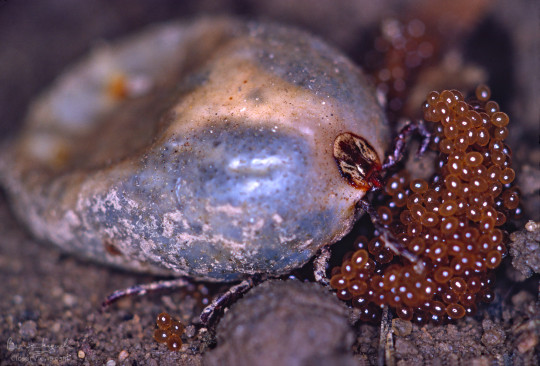
Wood tick (Dermacentor variabilis) female laying eggs.
Photo by Bernard Lynch
#wood tick#dermacentor variabilis#dermacentor#ixodidae#ixodoidea#ixodida#parasitiformes#acari#arachnida#chelicerata#arthropoda#ecdysozoa
40 notes
·
View notes
Photo

I found this dog tick (Dermacentor variabilis) crawling on me, so I put it in the freezer to kill it. I took it out later that day to look at it with a magnifier, but it started moving again, so I put it back in for a few more days. For some reason, both times it froze, it put its foremost limbs in this strange symmetrical position (fullview if you can’t see what I’m talking about).
This tick seemingly disappeared when I tried to flip it over to scan the other side. It could still be alive, for all I know.
#tick#dermacentor#dermacentor variabilis#arachnid photography#photographers on tumblr#my bug photos#technically it's a scan
3 notes
·
View notes
Text
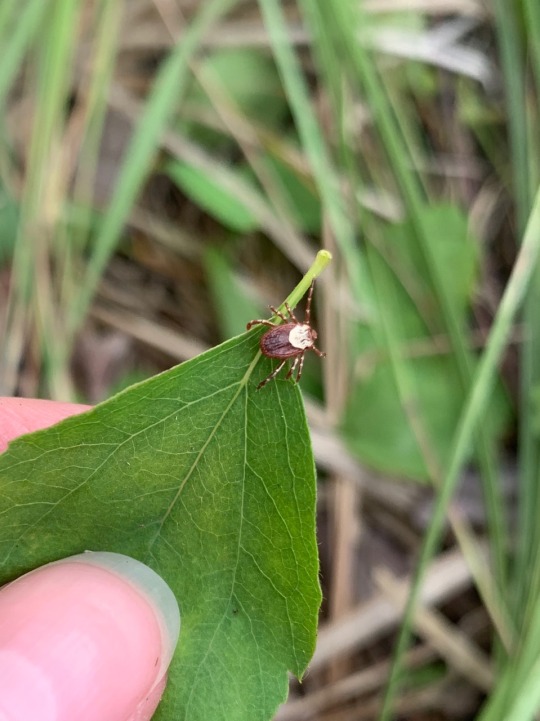
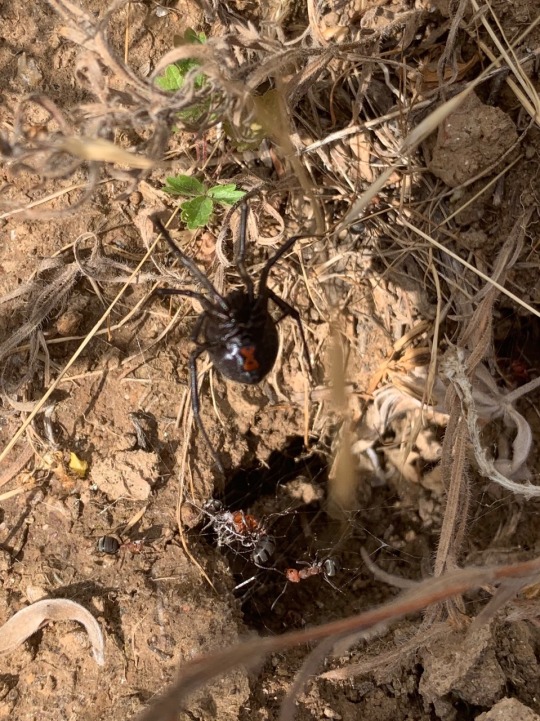
Met a couple of girlfriends on my hike (:
10 notes
·
View notes
Note
Trick or treat!!!
How lovely- you get a rocky mountain wood tick (Dermacentor andersoni)!

27 notes
·
View notes
Text
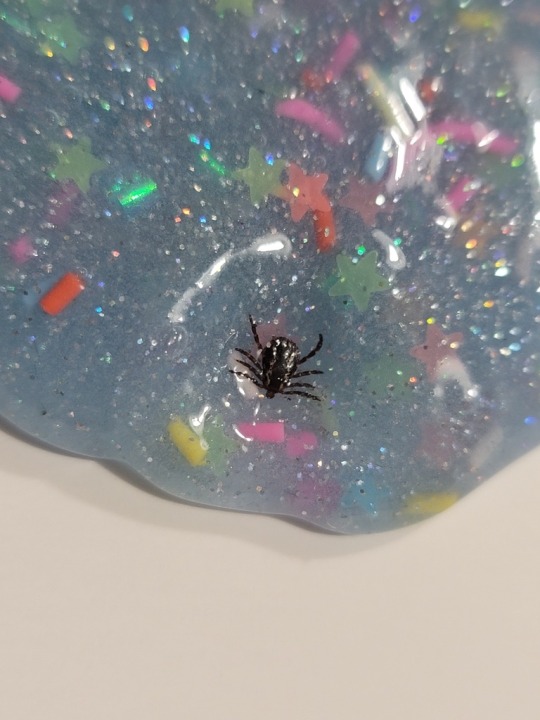
0 notes
Note
hello! I have a phobia of both ticks and leeches, and I've been trying to work through it--do you have any fun facts about them you could share?
I love ticks in the same way I love lionfish, tigers, and cassowaries. They're incredible animals, as long as they stay far away from me!! Leeches are more trustworthy, and I've honestly considered getting them as pets someday...
Fun facts about ticks:
There are a lot of tick species in the world, and a lot of them are incredibly beautiful. My personal favorites include Amblyomma variegatum and Dermacentor rhinocerinus, but honestly, once you've recognized the beauty of one tick, you'll be able to find it in them all.
Ticks aren't really their own order of arachnids - they're just extremely specialized mites. Some ticks are in fact so specialized that they can only survive on a single host species. One of these is Ixodes heathi, which is now critically endangered because its host (Burramys parvus) is critically endangered.
Ticks can get ticks! It's not unheard of for males to find females who are engorged and ready to mate, and instead just start feeding off all the blood she's worked so hard to collect. This is called hyperparasitism - parasites parasitizing parasites.
When a female tick is ready to lay eggs, she'll usually search for a secure and comfortable microhabitat - typically under leaf litter - and lay them all there. However, Argasid ticks go the extra mile to secure the health of their babies - females of this family will lay smaller clutches, each in a different spot, over the course of several years!
The american dog tick, Dermacentor variabilis, has an alarm pheromone that it secretes when it's in danger. The pheromone attracts other ticks, making them cluster around it and protect it - you could almost call it a form of altruism :)
I usually only write 5 facts, but here's a bonus: A lyme disease vaccine based on mRNA is currently in development and it has shown a lot of promise so far!
Fun facts about leeches:
Parents often carry their eggs around until they hatch, and a lot will keep carrying their babies long after hatching to ensure they survive. Some species, like the kangaroo leech (Marsupiobdella africana) even have a dedicated pouch for their babies :)
Leeches have eyes and they are tiny and adorable.
Leeches are an important part of modern medicine! Though we have figured out many other ways to improve circulation and prevent blood clots, nothing is more effective than leech therapy. They're especially helpful in preventing amputations in diabetic people, but any place on the body with poor circulation or in need of draining (such as hematomas and places that have just been operated on) will benefit from leech therapy.
Leech bites are completely painless and they don't carry any diseases that are dangerous to humans. On top of that, leeches are often quite specialized and only a handful will actually feed on humans.
Not all leeches look like greenish worms. Some, like Croatobranchus mestrovi, look downright angelic.
#ask#ticks#leeches#i have so many feelings about leech therapy i start crying if i think about it too hard#they're just little animals who don't know how much they're helping... they're literally preventing amputations#parasites cw#fun facts
1K notes
·
View notes